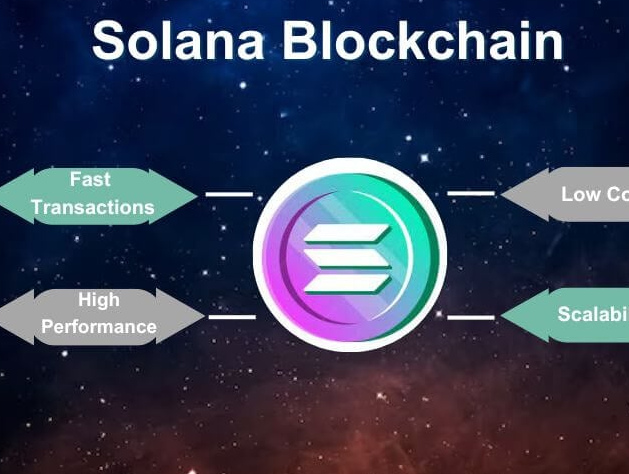Solana’s price barely budged over the weekend, finishing Sunday July 27 at $186.69, up just 1% on the day. Meanwhile, top contenders like Ethereum, BNB and XRP each clocked in solid 2% gains. Still, there’s more brewing under the surface. A trio of technical and on-chain signals suggest Solana might be gearing up for a sharp move — and bulls are starting to circle.
Despite flat open interest, falling volume, and a lacklustre weekend chart, new transaction highs and protocol upgrades may hold the key to a turnaround.
Solana Flatlines, While Rivals Race Ahead
It wasn’t exactly a thrilling weekend for Solana traders.
The price held above $185 for most of Sunday, closing at $186.69 — a modest 1% gain. Compare that to Ethereum, Binance Coin and XRP, all of which managed to gain over 2%, and the underperformance becomes more noticeable.
Volume told a similar story. Solana’s 24-hour trading activity slumped by 32%, a significant drop in participation.
And yet, open interest didn’t move a muscle.
That figure — stuck at $10.7 billion — shows no fresh money entering the market, but also no exodus. A stalemate? Maybe. Or possibly, a coiled spring.
Open Interest Stays Put — That’s Not Always Bad
Flat open interest might not grab headlines, but it’s worth a closer look.
Yes, traders didn’t pile into new positions over the weekend. But that also means they didn’t panic sell. In crypto, that’s often a win in itself.
In fact, stable open interest — when paired with falling volume — can sometimes indicate market participants are holding tight, anticipating a shift.
Here’s a quick breakdown of what’s happening:
-
Open Interest: $10.7 billion (unchanged)
-
24-hour Volume: Down 32%
-
Funding Rates: Neutral
Open interest holding firm amid a dip in trading volume suggests a temporary lull — not necessarily a downturn. It could mean traders are sitting tight, waiting for clearer direction. And the next move? That might be up.
Record-Breaking Transaction Numbers Spark Optimism
On-chain, Solana is doing something many others aren’t — breaking its own records.
Mert Mumtaz, founder of Solana infrastructure startup Helius, confirmed that Solana hit an all-time high in transactions this weekend. That’s no small feat considering the recent criticisms of blockchain congestion and fee spikes across various ecosystems.
This spike comes in tandem with ongoing upgrades aimed at blockspace optimisation. These updates are designed to improve how Solana handles its fast-growing demand.
In one sentence: The network is handling more activity — and doing it better than before.
That’s a strong bullish indicator, especially for investors who track blockchain health over short-term price noise.
Traders Turn to Market Structure for Clues
Technical traders are watching Solana’s price chart like hawks.
The $185 support level — which held steady this weekend — has become a focal point. It’s been tested multiple times this month, and each time, buyers have stepped in. That sort of price behaviour can sometimes indicate accumulation.
There’s also growing chatter about a potential breakout if SOL manages to flip $190 into support. That could open the door to a move back toward the $200 range.
Let’s look at how Solana stacks up against key rivals this weekend:
| Token | Weekend Price Change | 24h Trading Volume | Notable Trend |
|---|---|---|---|
| Solana (SOL) | +1% | ↓ 32% | Transaction ATH |
| Ethereum (ETH) | +2.1% | ↓ 18% | Stable flows |
| Binance Coin (BNB) | +2.3% | ↓ 12% | Minor breakout |
| XRP | +2.2% | ↓ 25% | Range-bound |
The market’s still digesting macro signals, but traders clearly haven’t given up on SOL’s next leg up.
Developers Stay Busy — That’s A Good Sign for Solana Holders
While the price cools off, developers haven’t taken their foot off the gas.
Blockspace optimisation upgrades are quietly reshaping how Solana handles high-volume activity. It’s technical, sure. But these changes could be critical as the network scales.
And it’s not just upgrades — there’s building going on too.
Solana’s ecosystem continues to attract projects in DeFi, NFTs, and even AI. Not to mention, the network’s lightning-fast speeds and low costs still draw developers away from costlier chains like Ethereum.
This kind of builder activity — even during price lulls — tends to be a leading indicator of long-term strength.
One paragraph with just one sentence, because sometimes that’s all you need.
The network’s getting faster, cheaper, and more efficient — and that matte.


 Bitcoin
Bitcoin  Ethereum
Ethereum  Wrapped SOL
Wrapped SOL  Cardano
Cardano  Chainlink
Chainlink  Sui
Sui  Avalanche
Avalanche  Bittensor
Bittensor  Polkadot
Polkadot  Mantle
Mantle  NEAR Protocol
NEAR Protocol  Aptos
Aptos  Internet Computer
Internet Computer  Arbitrum
Arbitrum  Algorand
Algorand  Cosmos Hub
Cosmos Hub  Jupiter
Jupiter  Sei
Sei  Render
Render  Filecoin
Filecoin  Immutable
Immutable  Celestia
Celestia  Optimism
Optimism  Stacks
Stacks  Injective
Injective  The Graph
The Graph  Pyth Network
Pyth Network  Flow
Flow  THORChain
THORChain  MultiversX
MultiversX  dYdX
dYdX  Akash Network
Akash Network  Illuvium
Illuvium  Metis
Metis  Manta Network
Manta Network  Dymension
Dymension  Kujira
Kujira